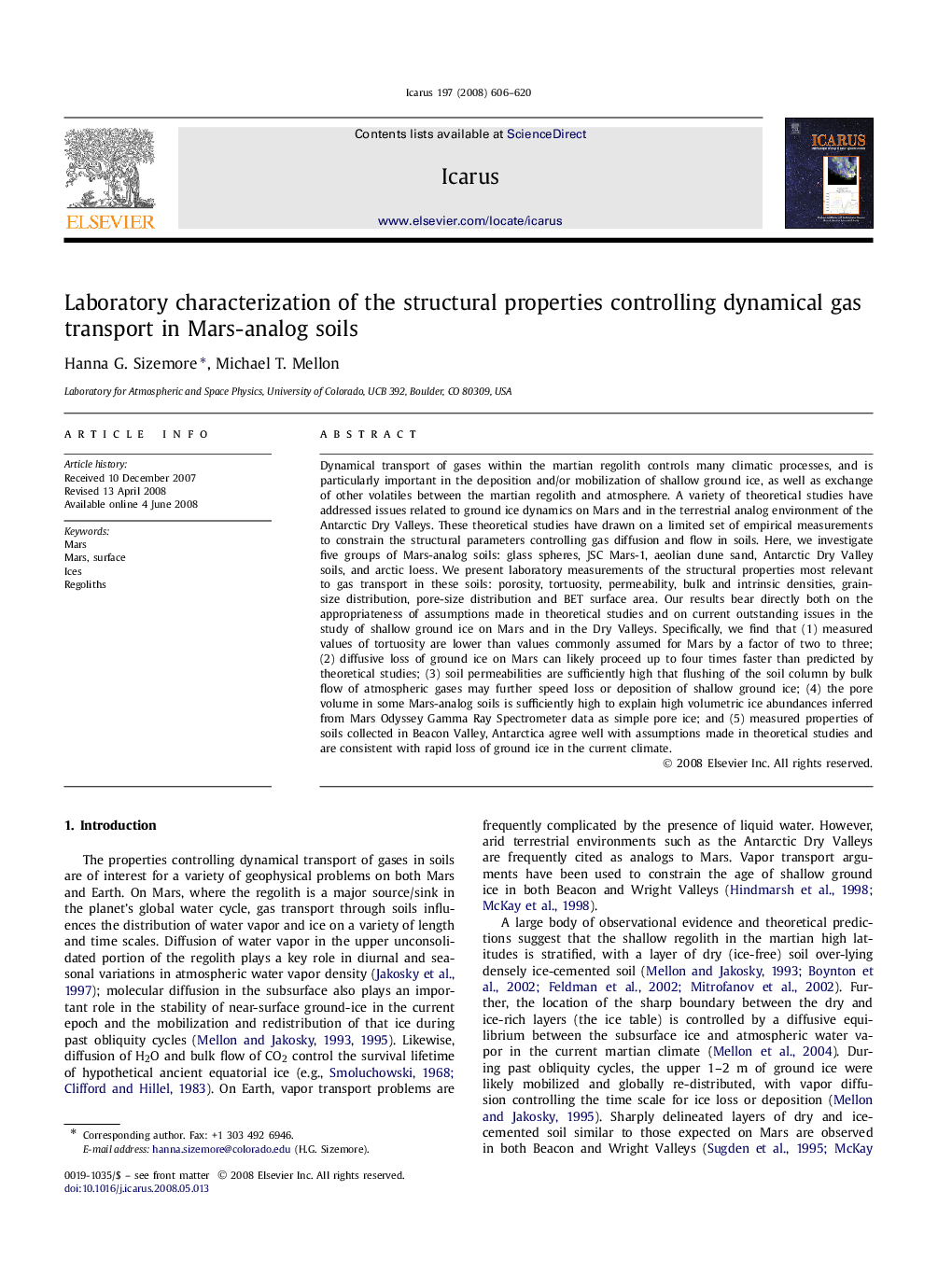| Article ID | Journal | Published Year | Pages | File Type |
|---|---|---|---|---|
| 1775808 | Icarus | 2008 | 15 Pages |
Dynamical transport of gases within the martian regolith controls many climatic processes, and is particularly important in the deposition and/or mobilization of shallow ground ice, as well as exchange of other volatiles between the martian regolith and atmosphere. A variety of theoretical studies have addressed issues related to ground ice dynamics on Mars and in the terrestrial analog environment of the Antarctic Dry Valleys. These theoretical studies have drawn on a limited set of empirical measurements to constrain the structural parameters controlling gas diffusion and flow in soils. Here, we investigate five groups of Mars-analog soils: glass spheres, JSC Mars-1, aeolian dune sand, Antarctic Dry Valley soils, and arctic loess. We present laboratory measurements of the structural properties most relevant to gas transport in these soils: porosity, tortuosity, permeability, bulk and intrinsic densities, grain-size distribution, pore-size distribution and BET surface area. Our results bear directly both on the appropriateness of assumptions made in theoretical studies and on current outstanding issues in the study of shallow ground ice on Mars and in the Dry Valleys. Specifically, we find that (1) measured values of tortuosity are lower than values commonly assumed for Mars by a factor of two to three; (2) diffusive loss of ground ice on Mars can likely proceed up to four times faster than predicted by theoretical studies; (3) soil permeabilities are sufficiently high that flushing of the soil column by bulk flow of atmospheric gases may further speed loss or deposition of shallow ground ice; (4) the pore volume in some Mars-analog soils is sufficiently high to explain high volumetric ice abundances inferred from Mars Odyssey Gamma Ray Spectrometer data as simple pore ice; and (5) measured properties of soils collected in Beacon Valley, Antarctica agree well with assumptions made in theoretical studies and are consistent with rapid loss of ground ice in the current climate.
